
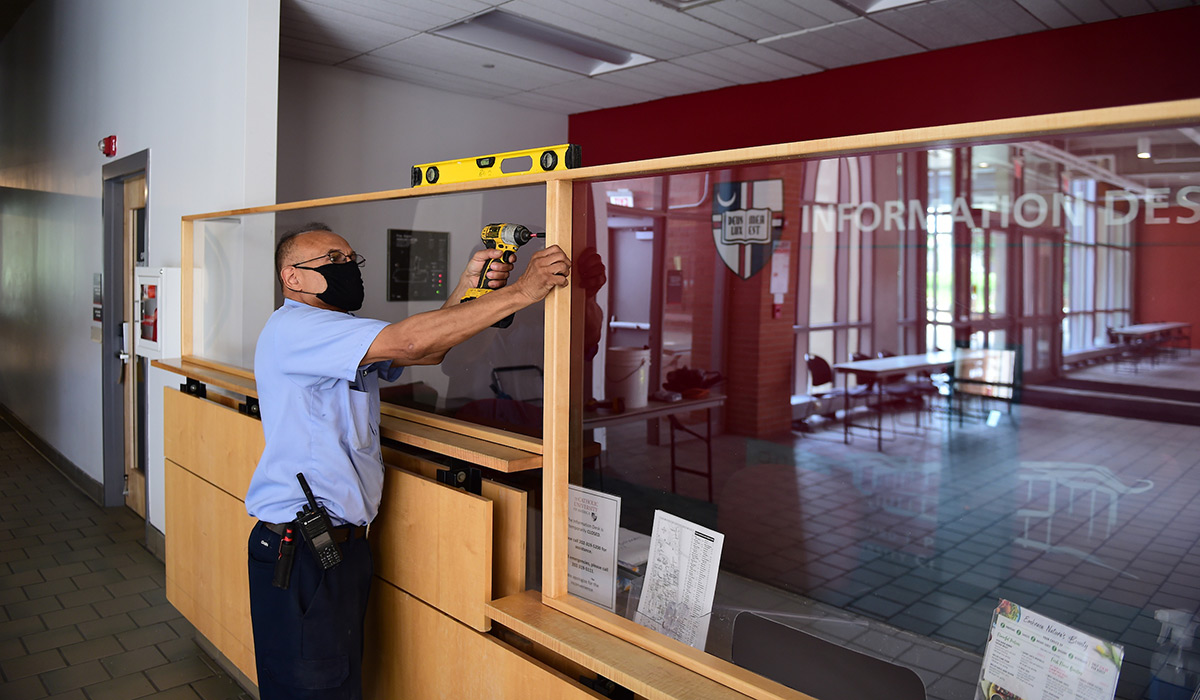
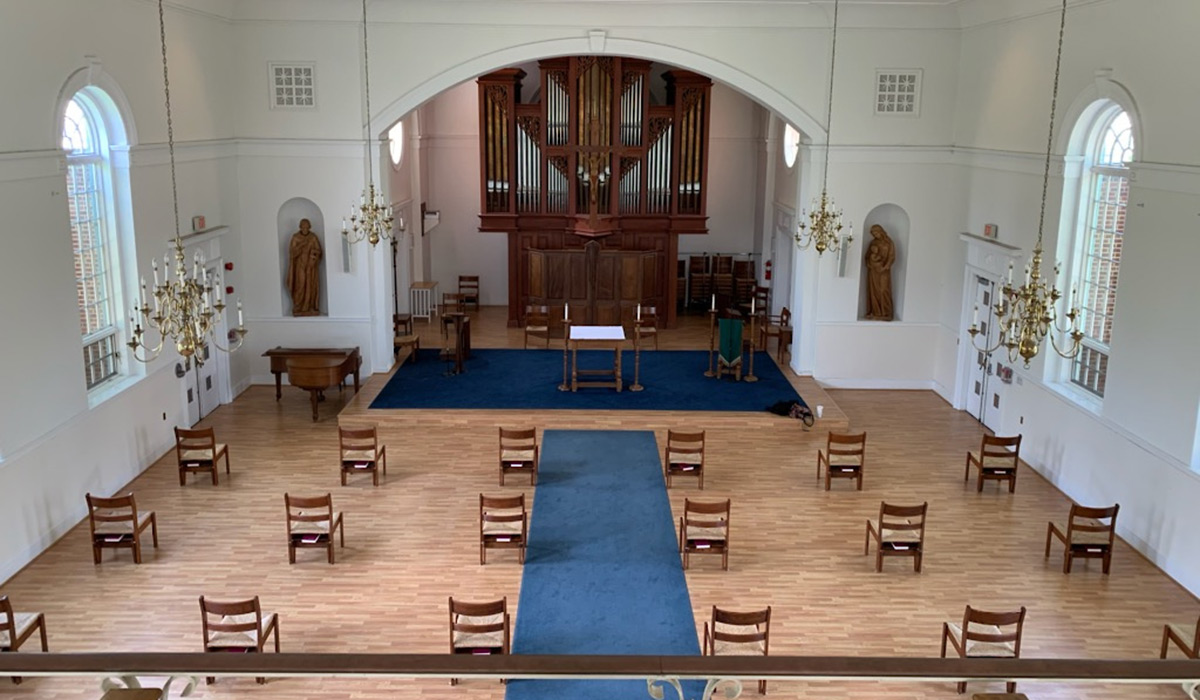
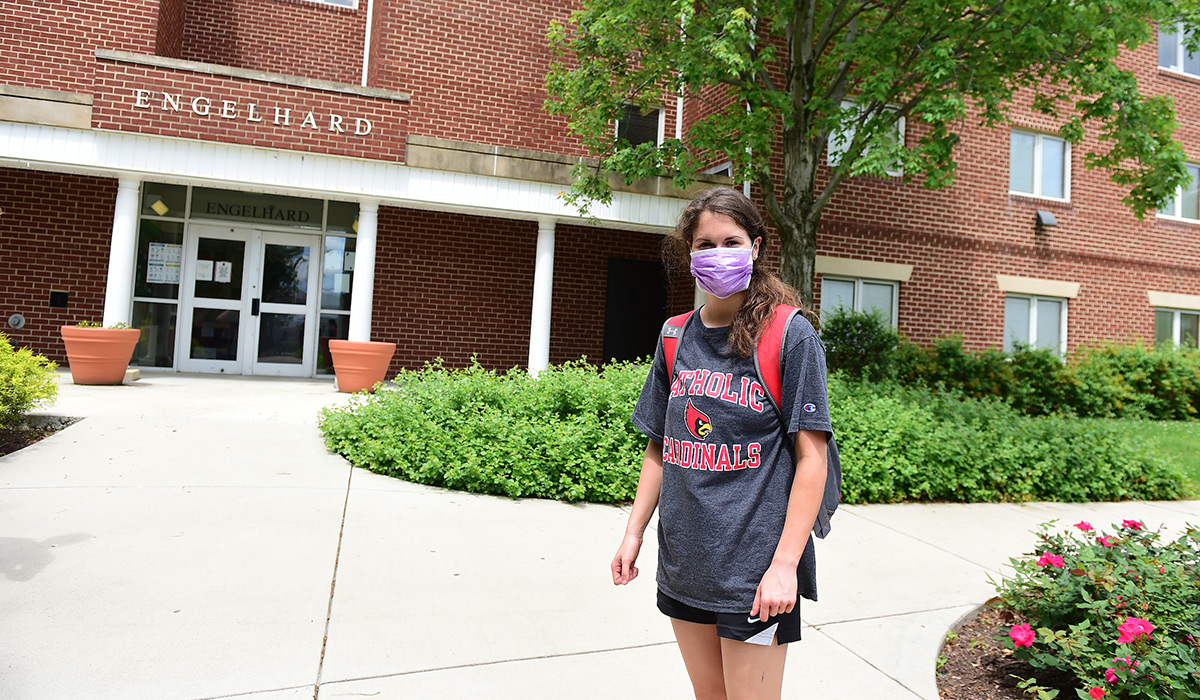
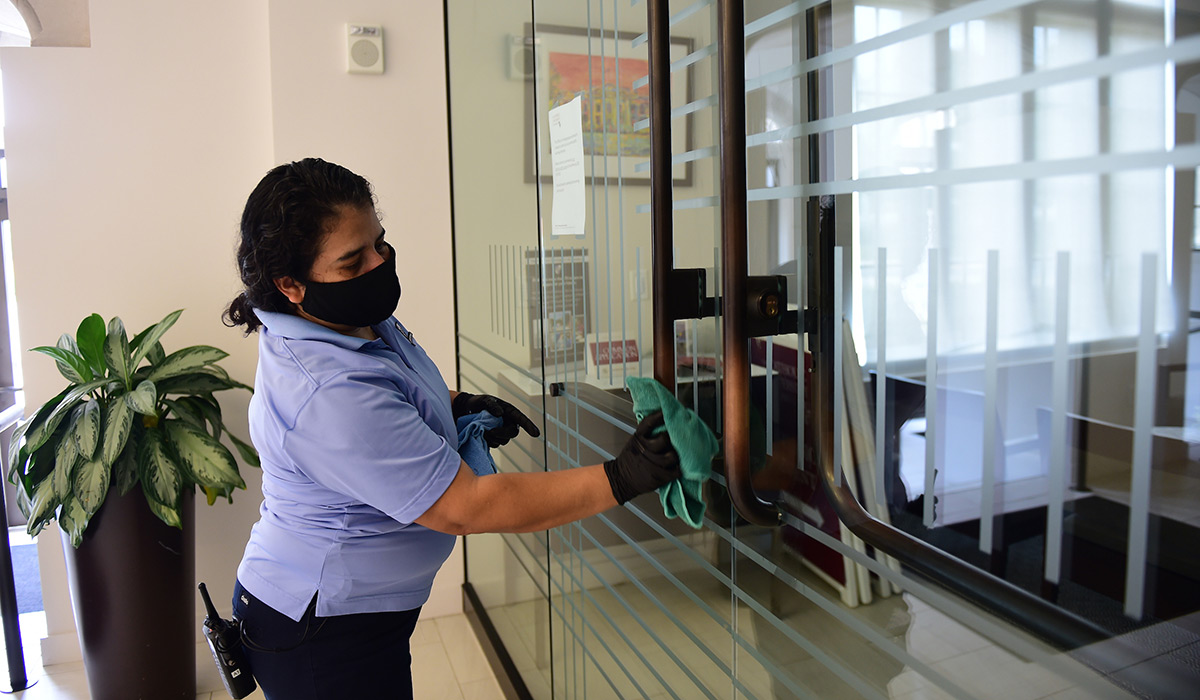
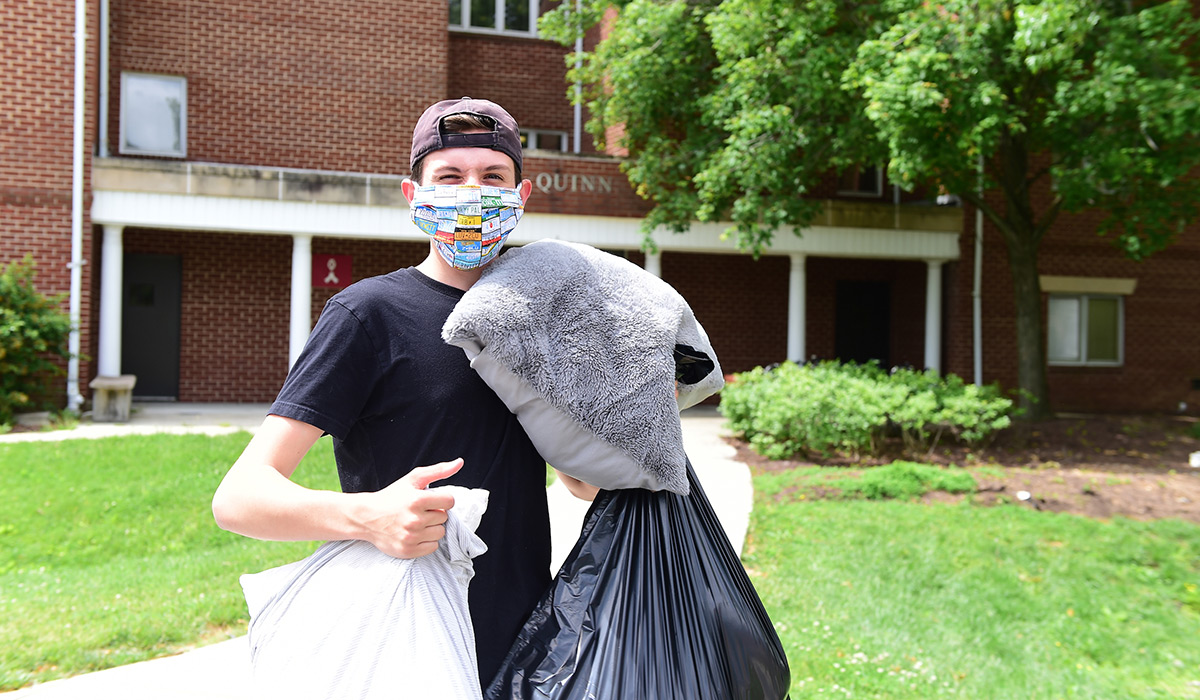

Many University staff are hard at work creating the Roadmap 20/21, which will navigate a safe return to campus. Refining staffing procedures, modifying the physical environment, and forming new best practices are all part of a campus-wide endeavor to ensure a safe and healthy return.
“The District of Columbia, Centers for Disease Control, and other University partners all play an integral role in our process,” says Luke Alar, senior director of Environmental Health and Safety. “These efforts are dynamic; requiring agility, participation, and collaboration.”
Staff have remained on campus since stay-at-home orders were issued in March. Facilities Maintenance and Operations and the Department of Public Safety have worked out measures to keep their employees safe while keeping the University operating.
Those measures have included face coverings and other proactive equipment, establishing new shifts to minimize workers’ exposure to others, and rotating times that they access shared areas such as time clocks and break rooms.
“We never left campus, and we’re preparing so others will feel safe,” says Debra Nauta-Rodriguez, associate vice president for Facilities Planning and Management and University Architect. “We’ve planned, implemented, and adapted to the ever-evolving guidance related to reducing risks and will continue to do so.”
Nauta-Rodriguez shared in a recent Roadmap 20/21 Task Force meeting that it was not an easy task to reimagine the workflow and scheduling of essential employees, but that she is grateful for her staff who continue to work tirelessly to draw up plans and incorporate operational processes that reflect the latest guidance from the CDC and District of Columbia.
There was a delay in student move-out procedures this year as the University observed the District’s stay-at-home orders. Currently, move-out requests are being scheduled in order to ensure there is minimal contact with staff and other residents and their families. As rooms are being emptied, facilities staff are giving each room a deep clean to prepare it for the fall semester.
In St. Vincent Chapel, chairs now sit six feet apart so that worshipers are better able to social distance themselves. In accord with the safety directives from the Archdiocese of Washington, the present plan is to add more daily and weekend Masses to the schedule while keeping in mind the requirement to sanitize in between every Mass. Masks will be required for all in attendance at University Masses.
New plexiglass barriers have been installed in Student Health Services, at the Pryzbyla Center Information Desk, and in the Power Plant where facilities contractors check in. Plans are in place for many more areas to receive similar barriers this summer.
Dr. Loretta Staudt, director of Student Health Services, indicates that these steps are “integral to maintaining a safe and healthy campus for all staff and students.”
As employees return to campus, they will be provided with an initial set of face coverings, hand sanitizer, tissues, and information on health and safety. There will also be a new training module for all faculty and staff to complete as they return to campus. The module is intended to help employees understand campus health and safety updates made over the summer, and how the shared responsibility of wearing masks, cleaning personal spaces, and following social distancing guidelines can help ensure the safety of all in our community.
“Although we’re extremely excited to begin the return to campus for those who have been working from home, there are some real challenges we'll be working through together -- care for family members who are still at home and public transportation are just two of the daunting complications we'll navigate,” says Matthew McNally, Chief Human Resources Officer. “We'll start slowly with supervisors and critical roles, and then gradually bring in more support as needed throughout the summer."
While tracking the DC Department of Health, CDC, and OSHA guidelines, the University is aiming to maintain rotation schedules that support telework while safely bringing the balance of our staff to campus to support the needs of our community. Some areas will have greater needs for on-campus support than others as dictated by each area's range of responsibilities. Supervisors will continue to tune their areas’ schedules as both regional guidance and business needs evolve.
For the month of June, the Edward J. Pryzbyla Center will remain closed (except for those who have offices in the building) as the staff works to lay out new traffic patterns and other measures to ensure greater social distancing measures when students return in the fall. Dining services will remain closed through July. Employees who are working on campus in the month of June and July should bring their own lunches or support restaurants in the neighborhood. Most of them are open and offer carry out and ordering through their websites and/or apps.